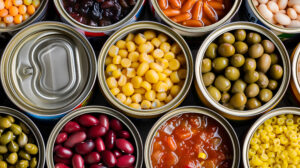By Lisa Jo Lupo, TAG Director, Communications
It’s not the first time that a Canadian government entity or association has urged its citizens to “Buy Canadian,” but from the pride of country and depths of allegiance I witnessed when I was in Canada in mid-April, it is the most widespread and the most US-focused ever embraced by the country.
Having lived all my life in the US, residing in five different states and visiting all but two, I’ve seen and lived heights and depths of patriotism. But the current state of patriotism in Canada is different; not only is it a country that has taken a new pride in itself, it is willing to put its money on the line to show it. And the food industry needs to be aware and prepared.
In working the TAG Canada booth at the Canadian Summit on Food Safety in Toronto, I spoke with many of the attendees, and it quickly became apparent that TAG’s incorporation as a Canadian business with Canadian associates, was important to a high number of those seeking consultation. While I was not begrudged as an individual from the US, many made it clear that, while they sought out TAG because of our reputation, they preferred to Buy Canadian, so were thrilled to realize they could with TAG Canada.
The US avoidance became even more clear when I sat in on a seminar in which Dalhousie University Professor and Researcher Sylvain Charlebois discussed the impacts of the US tariffs on food, and the retailer and consumer response, based on a Food Sentiment survey of 9,700 Canadians. In Canada:
- Sales of Canadian products since February are up 3.5% nationally – with U.S. goods sales down 6.5%.
- 61% of Canadians are willing to pay 5% to 10% more on Canadian products, even when less expensive US goods sit alongside.
- If a Canadian option is not available, a non-US item is seen as the next best.
- Some grocery stores are putting a capital “T” next to the price of goods for which the price has increased because of the tariffs.
- With the consumer push on grocers to “de-Americanize” their stores, “it’s like Canada Day every day,” Charlebois said.
- And, each statistic and jab at the US was met by the nodding of heads, bursts of laughter, and rounds of applause from attendees.
What is critical for US food manufacturers to realize is that food is one of the easiest commodities by which Canadians can shun American goods. Sticking to Buy Canadian for clothes, household goods, etc., can be very expensive; so paying a few extra cents or dollars for Canadian-produced food is seen by many as manageable and worthwhile.
Additionally, while the de-Americanization of stock is not taking all US foods from shelves, much is not being reordered once stock is gone. For example, we were able to get an American wine at a restaurant, but only the brands that remained as the restaurant liquidated its US stock. Once a brand is gone, we were told, it’s gone. With retailers planning their purchases six months in advance, some food manufacturers may not yet be feeling a loss of Canadian purchasing, but you need to be prepared; the next order may be significantly less or completely replaced with a “Product of Canada.”
The outcome of all this is that regardless of the amount or longevity of tariffs, Canadian pride, which was already hit by the 51st state talk from its long-term trade partner, has been further elevated to an “elbows up” response. The hockey reference – by which Red Wing player and Saskatchewan native Gordie Howe was known for putting his elbows up against opposing players who crowded him – is appearing across the country in a show of nationalism. It is a nationalism that once instilled is unlikely to fade.
All written content in TAG articles, newsletters, and webpages is developed and written by TAG experts, not AI. We focus on the realities and the science to bring you the most current, exacting information possible.





